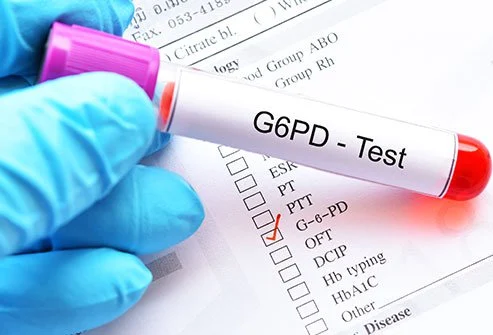
G6PD Deficiency and Dental Treatment
G6PD (Glucose -6- Phosphate dehydrogenase) deficiency is a congenital metabolism error that pre-dispose to red blood cell breakdown. It is the 2nd most common human enzyme defect, being present in more than 400 million people world wide. G6PD deficiency is a genetic disorder that most often affects males. It happens when the body doesn’t have enough of an enzyme called glucose-6-phosphate dehydrogenase (G6PD). G6PD helps red blood cells work. It also protects them from substances in the blood that could harm them.
What is G6PD?
It is a cystollic enzyme that catalyzes chemical reactions. This enzyme participates in the pentose phosphate pathway, a metabolic pathway that supplies reducing energy to cells such as erythrocytes (red blood cells), by maintaining the level of the co-enzyme nicotinamide adenine dinucleotide phosphate (NADPH). The NADPH in turn maintains the level of Glutathione in the cells that helps to protect the red blood cells against oxidative damage from compounds like hydrogen peroxide.
G6PD reduces NADP+ to NADPH while oxidizing, glucose-6-phosphate . This x-linked genetic deficiency of G6PD predisposes a person to non immune hemolytic anemia.
Symptoms for G6PD deficiency:
- Yellowish skin
- Dark urine
- Shortness of breath
- Fatigue may develop
Complications in G6PD deficiency:
Anemia and newborn Jaundice
Red blood cells breakdown may be triggered by infections, certain medication stress, or foods such as fava bean.
The severity of the condition may vary on specific mutation.
Treatment for G6PD deficiency:
The most important measure is prevention avoidance of the drugs and foods that cause hemolysis. RBC breakdown, vaccination against some common pathogens (eg : Hepatitis A and Hepatitis B ) which can prevent infection induced attacks.
In the acute phase of hemolysis, blood transfusion might be necessary, or even dialysis in acute kidney failure. Blood transfusion is an important symptomatic measure , as the transferred red cells are generally not G6PD deficient and will live a normal lifespan in the recipient’s circulation. Those affected should avoid drugs such as aspirin.
Splenectomy is also beneficial for some patients as spleen is called the slaughter house of red blood cells . folic Acid should be used in disorders featuring a high red cell turnover. Although vitamin E and selenium have antioxidant properties. Though their use does not decrease the severity of G6PD it gives a symptomatic relief.
A positive factor of this deficiency is that it confers protection against malaria , in particular the form of malaria caused by Plasmodium Falciparum, the most deadly form of malaria. This phenomenon is that the call infected with the plasmodium parasite are cleared more rapidly by the spleen. This might give G6PD deficiency carries an evolutionary advantage by increasing their fitness in malaria endemic environments.
Dental consideration:
Pale discoloration of oral mucosa with is associated with pancytopenia
Increased susceptibilty to infections
Spontaneous bleeding on slight provocation
Pus precipitation from gums
Ecchymosis on palatal and gingival mucosa
Inflammation of gingival and periodontal tissues most commonly seen in anterior region
Spacing seen in anterior regions of the oral cavity which leads to compromised periodontium
Dental Treatment in G6PD deficiency
Oral prophylaxis including soft tissue debridement and surgical therapy after consulting and obtaining consent from hematologist
Surgical therapy include flap surgeries, regenerative periodontal therapy
Leave a reply

Leave a reply